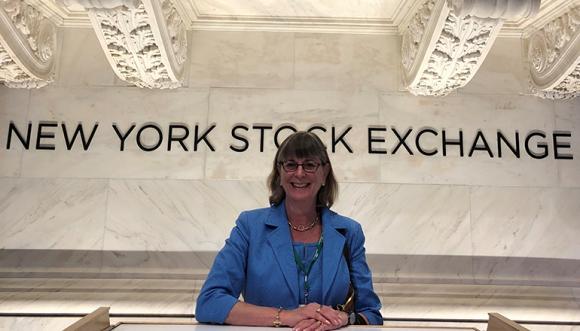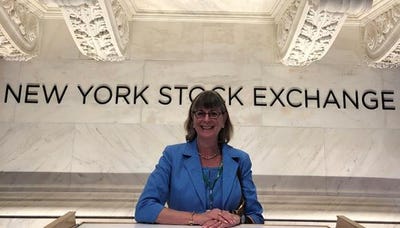August 2022 Business Report: Second Quarter Themes—Beat and Raise
Over the past two weeks, the publicly-traded solid waste companies reported second-quarter results and held follow-up conference calls. In this edition of Business Report, we highlight the common themes, as well as note some of the differences, that characterized the second quarter results and calls.

Over the past two weeks, the publicly-traded solid waste companies reported second-quarter results and held follow-up conference calls. In this edition of Business Report, we highlight the common themes, as well as note some of the differences, that characterized the second quarter results and calls.
Strong Organic Growth Led by Price
Across the board, revenues came in above expectations, primarily led by price growth. Core pricing was frequently cited as the highest ever, while the percentage increases rose sequentially from already strong first quarter levels—anywhere between 70-100 basis points. Waste Connections (WCN), Casella Waste (CWST) and GFL Environmental (GFL) reported core pricing of 7.2%, 6.9%, 7.3%, respectively, while WM (WM) and Republic Services (RSG) reported yield of 6.2% and 5%, respectively—all substantially higher than the prior year. By all reports, customer acceptance of the price increases remains high, with churn at low levels, and several company managements noted that solid waste services remain a small percentage of a customers’ overall cost structure, on the order of 0.5%.
Recession? Not in Sight or the Numbers Yet
Unsurprisingly, given recent GDP data, a number of the analysts probed for signs of economic weakness on the conference calls. Uniformly, company managements, while certainly cognizant of the economic risks, noted no real signs of it in their businesses. WM and RSG had higher than expected solid waste volumes of 2.3% and 2.4%, respectively. WM noted strength in key metrics such as service intervals and net new business, while pointing to strength in forward-looking lines such as special waste, but management also believes WM may be benefitting from market share gains, as smaller haulers struggle in the current inflationary and labor constrained environment, and technology widens the gap. WM and RSG also raised or reaffirmed the higher end of original volume guidance. GFL volumes were also strong at 2.4%, in part benefitting from the Canadian reopening. WCN and CWST had more muted volume results and outlooks, but apparently not due to current economic weakness but rather due to a combination of customer/contract “deselection” or conservatism.
EBITDA Beats, But Margins Shy
Again across the board, EBITDA was ahead of expectations on a dollar basis, though margins were generally modestly below expectations. Although every company had individual margin puts and takes, the primary culprit was the second quarter rise in fuel costs above what was seen and forecasted in the first quarter. Thus, unsurprisingly, GFL had the largest margin miss versus expectations, as it has fewer fuel recovery programs in place—but ultimately this provides a self-help opportunity as it catches up to the industry, which is a major GFL management focus. Importantly, and more unequivocally than in the first quarter, all the other companies had anywhere between 40-110 basis points of improvement in their underlying solid waste operating margins, as the strong pricing largely covered internal inflation costs.
Has Inflation Peaked for the Industry?
Although management teams were all hopeful that inflation had peaked in the second quarter, and the toughest labor and wage pressures were behind them, it was less clear from the actual numbers. CWST’s internal cost of inflation rose sequentially in the second quarter, while WCN’s dipped. Sequentially, all the companies had higher price in the second quarter as they responded to higher costs in the quarter, and although fuel was outsized, labor costs remained generally elevated as well, although WCN noted that wage increases had peaked for them in the first quarter. Nevertheless, it’s important to note that all the companies will at least benefit from easier comparisons in the second half, as they begin to lap the more acute inflationary pressures that began in the second half of last year, whether current inflation begins to roll over in the third quarter or not. As a result, all the companies are forecasting margin improvement in the second half, despite a number of the players noting that recycled commodity and renewable energy (RINs) pricing look to be modest headwinds in the second half versus the tailwinds they were in the first half.
Guidance Raised on All Metrics
Also uniformly, all the companies raised revenue, EBITDA and free cash flow (FCF) guidance, and RSG raised EPS guidance. GFL appeared to have the lowest bump up, at around 1%, while RSG increased guidance by roughly 4%. Mathematically, implied margin guidance came down from original guidance, again basically due the margin-dilutive impact of higher fuel surcharges (generally estimated to be an incremental impact of around 50-60 basis points), but underlying solid waste operating margins were set and forecast to improve for the year.
Sustainability Investments On Track or Accelerated
Even facing the likelihood of lower recycled commodity and RINs pricing in the second half, investors remain focused on renewable energy (RNG), landfill gas-to-energy (LFGTE) and materials recovery facilities (MRF) investments, as sustainability investments are now considered major growth opportunities for all the companies. GFL is now contemplating RNG plants at 22 landfills, above the 10-12 originally envisioned, while major MRF upgrades were a priority and highlighted by all.
M&A Activity Accelerated and Pipelines Remain Robust
CWST, WCN and GFL are all running ahead of original expectations for acquired revenues, while RSG, after just closing ECOL this past quarter, sees investing another $600 million (up from $500 million) in recycling and traditional solid waste tuck-in acquisitions in the remainder of the year, as management noted they didn’t see another large environmental services acquisition in the second half. WM surprised (pleasantly) with an increase in its target from $100-$200 million typically to $300-$400 million. Even with the very elevated merger and acquisition (M&A) activity of the last few years, all the companies are citing very robust, undiminished acquisition pipelines of quality, smaller solid waste haulers, no doubt aided by what several management teams noted to be “seller fatigue”—owners tired of coping with labor shortages, rampant inflation and continued COVID fallout.
Where are Pricing and Margins Going in 2023?
Although companies will not provide formal guidance until they report their fourth quarter results in February of 2023, there was intense focus on what pricing could look like in 2023, given the “push me pull you” of currently high inflation numbers rolling into (and materially benefitting) the restricted, or CPI-linked, portion of the business pricing in 2023, versus possibly lower levels (in percentage terms) of open market pricing if inflation does indeed cool. Responses varied, with WCN seeing potentially modestly lower (but still very strong!) total pricing in 2023 of around 7%, versus where 2022 pricing is now forecast to come in, while RSG believes pricing could tick a bit higher, to the mid-5% area. Higher CPI-linked pricing was variously estimated to add at least 100-200 basis points to 2023 restricted pricing. CWST is expected to benefit the least from the inevitable bump in restricted pricing, as it represents only about 10+% of its book of business. Wherever 2023 pricing ultimately comes in, management teams, particularly WM and GFL, noted that (with inflation subsiding) more of it would drop to the bottom line and result in higher margins—leaving analysts to ponder whether 2023 will turn out to be an outsize year for margins gains, which are more typically pegged at 30-40 basis points. RSG’s management did caution that the future direction of wage inflation would ultimately dictate whether 2023 margin strength would indeed prove to be outsized.
About the Author(s)
You May Also Like




